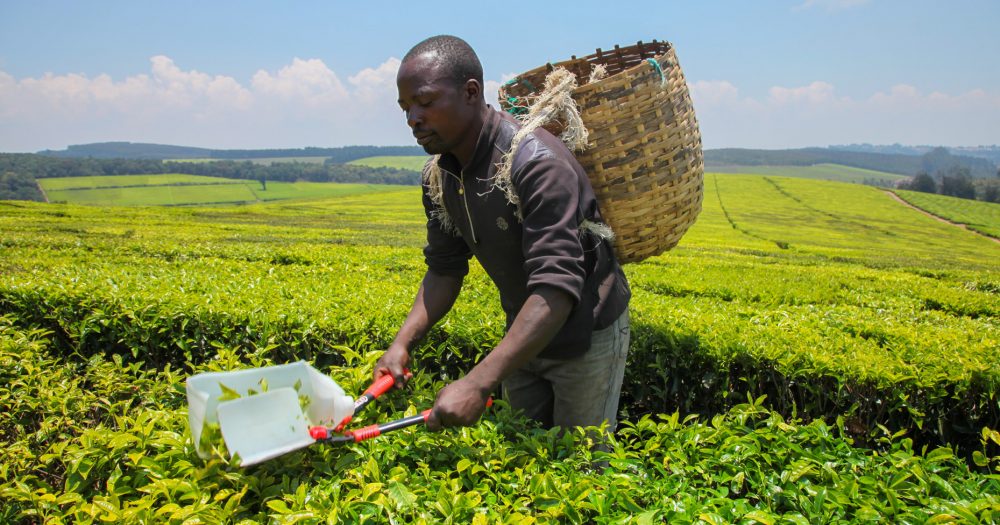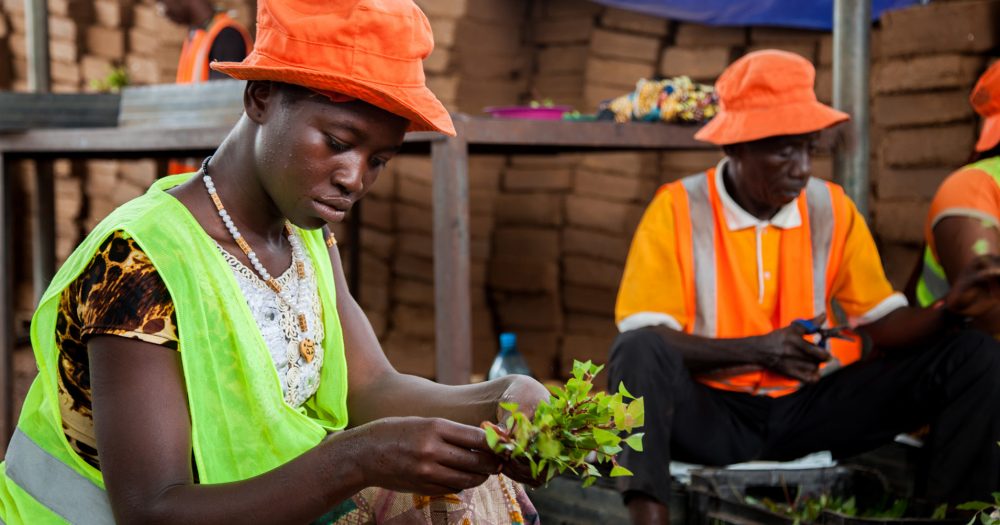Our investment
Description of the investment.
Description of the investment.
UK Climate Investments (further information on the fund's origins is at the top of this page) was transferred to BII's ownership in 2023. At that point, UKCI had made a total of seven investments across India, South Africa and Kenya, including large-scale wind and solar projects and a green housing project.
Impact information
Applies to investments made from 2019 onwards. The tabs in this section define what we expect to achieve through the investment, assessing the potential impact of the investment against six dimensions of impact. You can find more details on our methodology of assessing impact here.
Applies to investments made from 2019 onwards. The tabs in this section define what we expect to achieve through the investment, assessing the potential impact of the investment against six dimensions of impact. You can find more details on our methodology of assessing impact here.
What?
| Impact |
|---|
Avoid greenhouse gas emissions by increasing energy efficiency and the share of renewable energy generation; and improve access to adequate, safe, and affordable housing. |
|
|
How?
| Primary | Secondary |
|---|---|
|
Invest in renewable energy generation (80 per cent of portfolio, target to add 1,067 megawatts of capacity) and environmentally sustainable housing (20 per cent of portfolio, target to add 10,000 homes). |
Demonstrate the commercial viability of India’s first unlisted 'yieldco' for foreign investors, first listed 'yieldco' in Africa, and first affordable housing investment with IFC 'EDGE' building standards at scale in Africa. If successful, these investments can serve as a template which can be replicated by other market players and reduce perceived risk among commercial investors. |
Who?
| Stakeholder | Geography | Characteristics |
|---|---|---|
| Planet |
Global |
N/A |
| Consumers |
Kenya |
Primarily urban households on KES 50k-100k monthly income, who are underserved by formal sector housing supply. |
How much?
| Scale | Depth/Duration |
|---|---|
|
The sustainable housing investments are expected to benefit 10,000 households. |
The portfolio is estimated to avoid approximately 2.9 million tonnes of carbon dioxide equivalent of annual emissions once fully constructed. |
Contribution/additionality
| Contribution/additionality |
|---|
|
This investment does not fall within the scope of BII’s Contribution Framework. |
Risk
Evidence RiskSome of the assets in the UKCI portfolio are 'yieldcos', which are companies that own operating renewable energy assets that produce a predictable cash flow. Investing in these companies means renewable energy developers can sell their operating assets to the 'yieldco' and recycle the proceeds into new greenfield capacity. This model of increasing greenfield renewable energy capacity is indirect but credible. Execution RiskRisk of projects not being delivered successfully, which could hinder impact. However, this is considered low given most assets are operational or under construction by reputable developers with a strong track record. |
Impact score
|
Impact score (at point of investment)
The Impact Score is a tool to help us manage our performance against our strategic impact objectives. It is designed to incentivise investments that support our productive, sustainable, and inclusive objectives. You can find out more here. The Impact Score is published for investments made from 2022 onwards. The Impact Scores are calculated at the point of investment. We publish the Impact Scores of new investments annually, once the information has been externally assured by an independent third party. |
|---|
6 |
Environmental and social information
-
Environmental and social summary
A high-level description of the environmental and social aspects of the investment. This may include a summary of key environmental and social risks identified during environmental and social due diligence (ESDD); key elements of an environmental and social action plan (ESAP); or ways in which we plan to support the investee improve environmental and social standards, such as through their environmental and social management system (ESMS); as well as any other priority areas agreed with the investee.
-
Environmental and social risk
A risk category rating, which indicates the level of environmental and social risk associated with an investment. For an explanation of the categorisations used, see here. We consistently provide an environmental and social risk category for all investments screened from 2023 onwards.
Environmental and social summary
Following transfer of assets, E&S team will continue monitoring of the underlying portfolio to ensure E&S risks are adequately managed.
Environmental and social risk
Medium-High
Reporting and Complaints Mechanism
The Reporting and Complaints Mechanism allows anyone outside BII to report alleged breaches of the business integrity or environmental and social provisions of BII’s Policy on Responsible Investing. This includes breaches made by BII, a BII investee, or a portfolio company of a fund in which BII has invested. The Reporting and Complaints Mechanism Rules are available here. Reports and complaints can be submitted by email to reportsandcomplaints@bii.co.uk or by mail. See more details on our Reporting and Complaints Mechanism here.
For any other general enquiries contact us at enquiries@bii.co.uk
-
Key facts
- First published
:
When the investment was first published on the website database.
- February 2024
- Last updated
:
When the last quarterly update of the website database occurred.
- March 2025
- Project number
:
An identifier number shared by investments in the same project.
- D5315
- Status
:
The current status of the investment (green flag for active and red flag for exited).
- Active
- Region
:
The geographical region where the country is located. We currently invest in Africa, South Asia, South East Asia and the Caribbean. In 2023, BII’s investment mandate was extended allowing it to invest in regional funds linked to Ukraine, with the majority of activity expected to begin post-war. Investments outside these regions were made prior to 2012 under previous investment mandates.
- East Africa, South Asia, Southern Africa
- Sector
:
We prioritise those sectors that facilitate development and need our capital the most. Our priority sectors contribute towards many of the Sustainable Development Goals. They range from investing in the power infrastructure that will provide people with better access to electricity, to investing in financial institutions that direct capital to the individuals and businesses that need it the most.
- Infrastructure
- Investment type :
- Fund
- Start date :
- March 2023
- Amount :
- $222.73m
- Currency of investment :
- GBP
- Fund manager:
- Macquarie Group Limited
- Domicile
:
The company or investment fund’s place of incorporation.
- United Kingdom
We provide capital in the following ways: directly – through direct equity, direct debt, guarantees and other non-intermediated financial instruments; and indirectly – principally through investment funds.
For direct investments and fund investments, this is the date BII committed capital to the investments. This is typically the date on which legal agreements are signed by all parties.
For the portfolio companies of our fund investments, this is the date (either the month or the quarter) on which the fund committed capital to the portfolio company.
For direct equity investments, this is the date at which British International Investment exited the investment.
For debt investments, this is the date at which the final debt repayment was made.
For funds, this is the date at which the fund was terminated.
For underlying fund investments, this is the date at which the fund manager exited the investment.
The total amount committed, per financial instrument, per investment, on the date BII becomes subject to a binding legal obligation to provide funding or assume a contingent liability. This information is provided in US dollars.
For direct investments, this is the amount that BII has committed to the business or project. For fund investments, this is the amount BII has committed to the fund.
The currency in which the investment was made.
- Climate finance
:
Indicates whether the investment is climate finance qualified or partially climate finance qualified and the type of climate finance (adaptation, mitigation or both). We define climate finance using the multilateral development bank (MDB) and the International Development Finance Club (IDFC) Common Principles climate finance methodology. See Common Principles for Climate Mitigation Finance Tracking and Common Principles for Climate Change Adaptation Finance Tracking. We provide the climate finance qualification and type for commitments from 2020 onwards, which is when we launched our Climate Change Strategy.
- Partially qualified
- Climate finance type
:
Mitigation: Indicates investments which, by avoiding or reducing GHG emissions or increasing GHG sequestration, contributes substantially to the stabilisation of GHG concentrations in the atmosphere – at a level which prevents dangerous anthropogenic interference with the climate system consistent with the long-term temperature goal of the Paris Agreement
Adaptation: Indicates investments aimed at preventing or reducing the risks or vulnerabilities posed by climate change and increasing climate resilience. This includes both adapted activities and enabling activities to manage and reduce physical climate risks
Dual: Indicates investments directed towards activities contributing to both climate change mitigation and climate change adaptation and meeting the respective criteria for each category
The climate finance type of the investment is determined at time of commitment.
-
- Mitigation
- Energy type
:
‘Renewable’ includes energy sources with very low lifecycle emissions such as solar, wind and tidal or those meeting a certain criteria such as hydro power, biomass or geothermal. ‘Fossil fuel’ includes coal, oil and gas. Investments labelled as ‘Mixed’ support a combination of renewable and fossil fuel assets.
- Renewable
- First published
Investments made by this fund into companies:
For further information about these companies, visit https://www.greeninvestmentgroup.com/
| Investment name | Country | Region | Sector | Energy Type | Start date | Status |
|---|---|---|---|---|---|---|
| Clean Max Enviro Energy Solutions Private Limited | India | South Asia | Infrastructure | May 2019 | Exited | |
| H1 Oslo | South Africa | Southern Africa | Infrastructure | Renewable | January 2020 | Active |
| H1 Pele (Etna2) | South Africa | Southern Africa | Infrastructure | Renewable | March 2022 | Active |
| IHS Kenya Green Housing LP (Kijani) | Kenya | East Africa | Infrastructure | June 2021 | Active | |
| India Sun BV (Lakeside) | India | South Asia | Infrastructure | Renewable | August 2018 | Active |
| Lightsource India Limited | India | South Asia | Utilities | Renewable | December 2023 | Active |
| Revego Africa Energy Limited | South Africa | Southern Africa | Infrastructure | December 2018 | Active |


